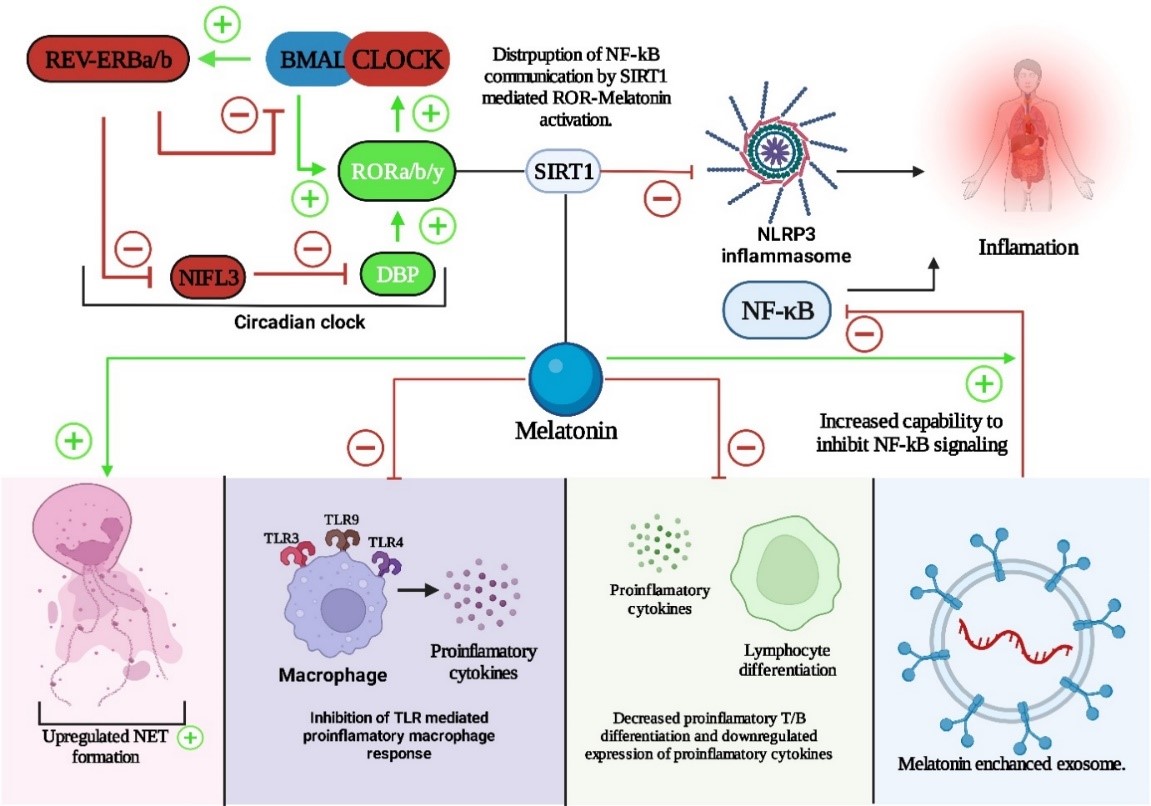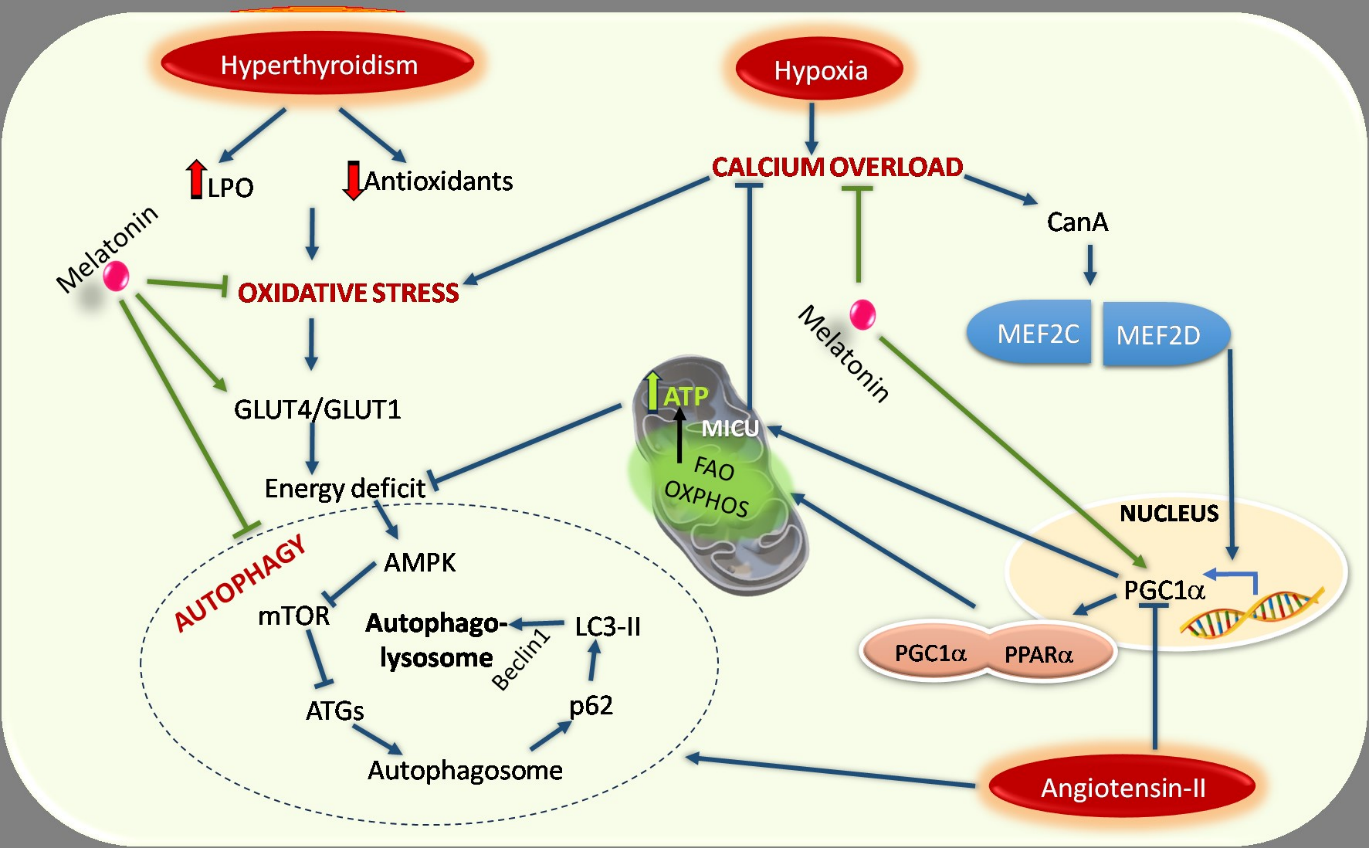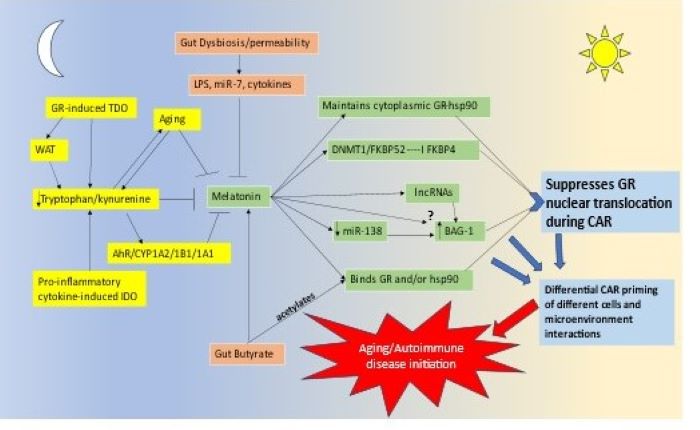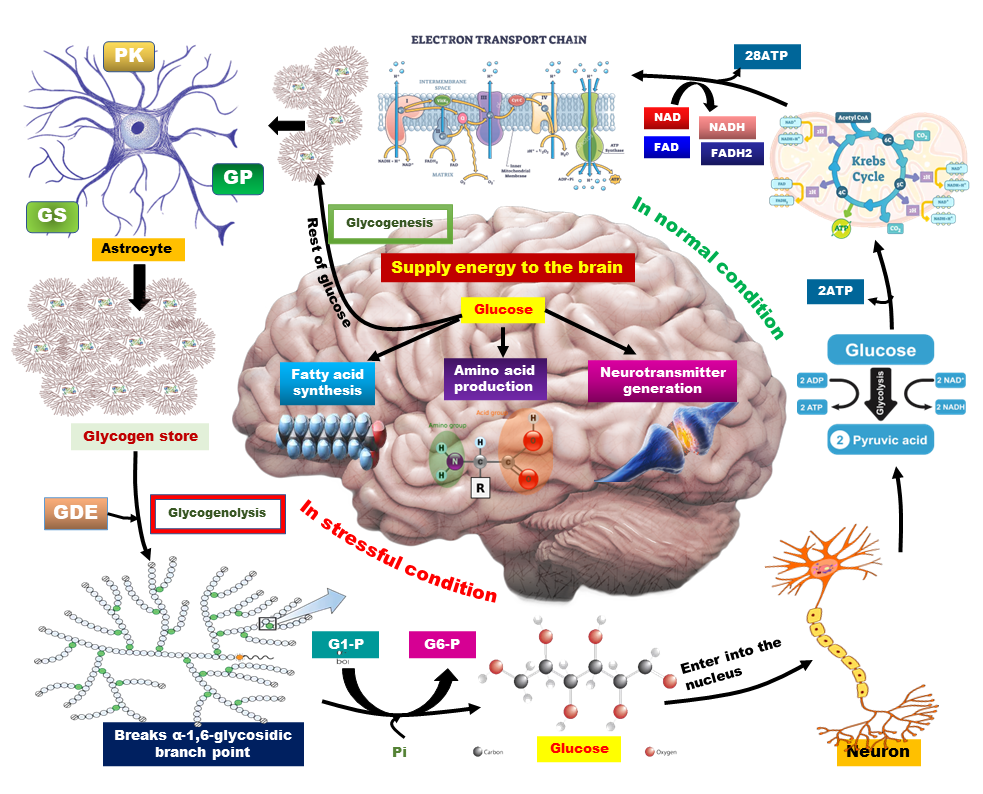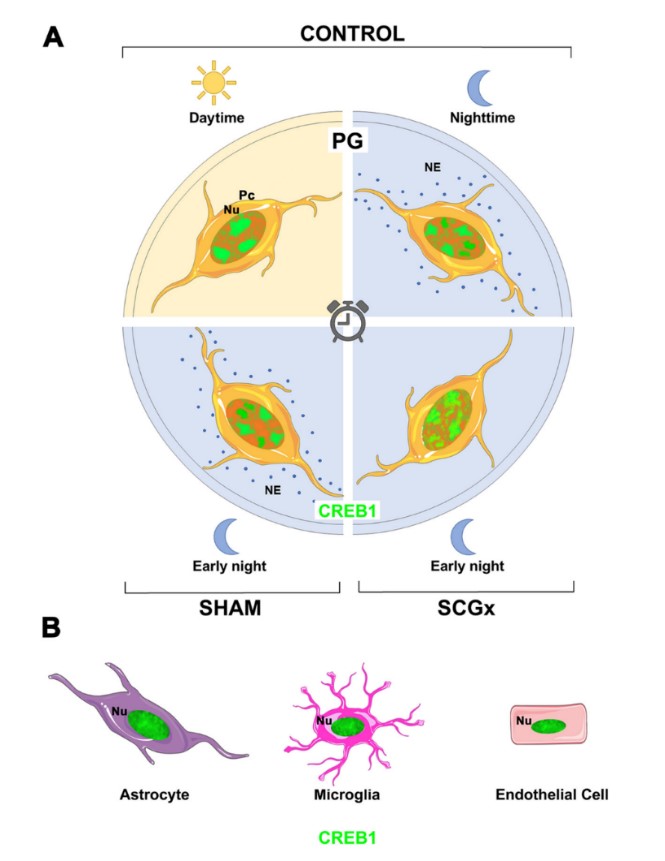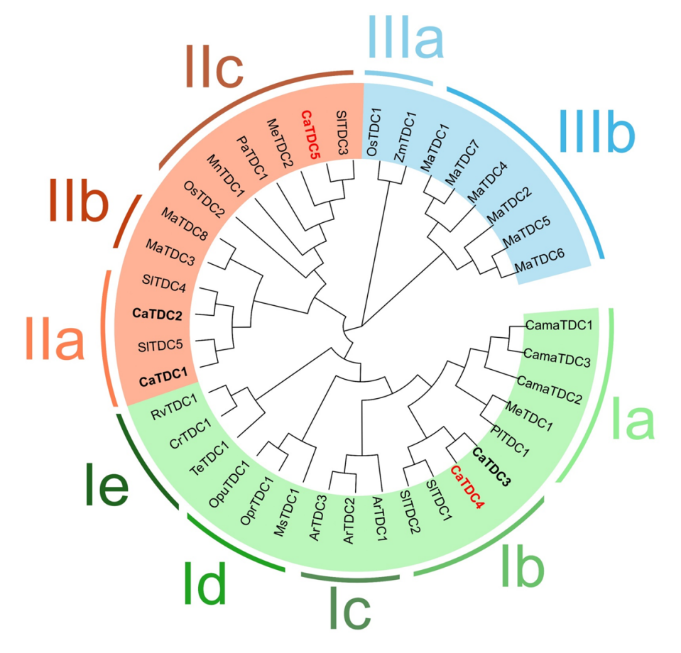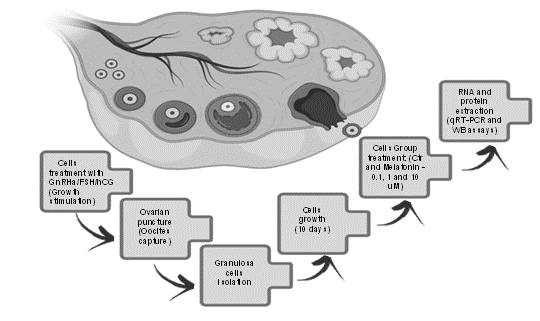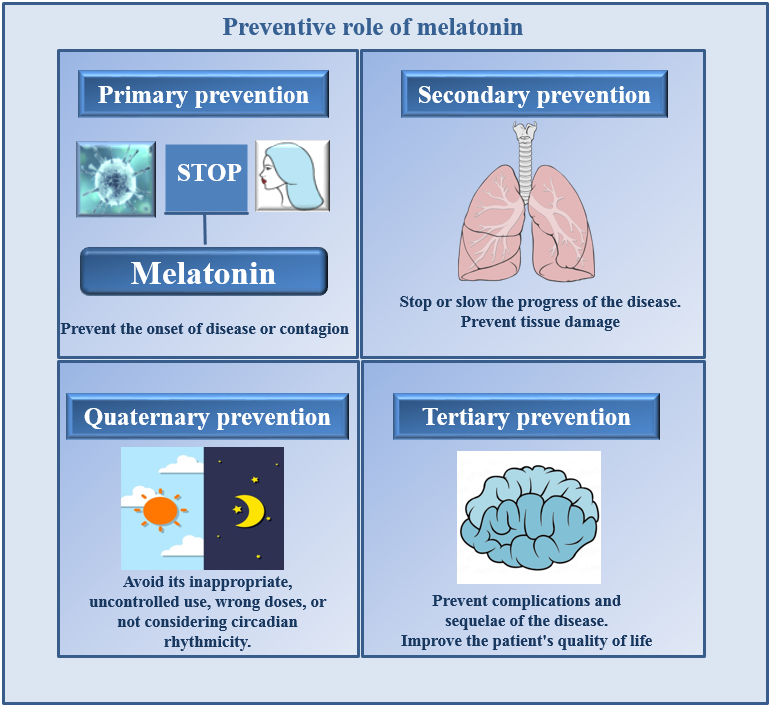
In the current issue, two studies have addressed the potential regulatory mechanisms of melatonin biosynthesis in remotely related species. One is in the pineal gland of an animal (rat) and another is in the fruit of a plant (pepper). It is obvious that they utilize different regulatory pathways but both use environmental light as the clue to adjust the transcriptional activities related to circadian rhythmicity and possibly for melatonin production. This is a conserved process that involves a large range of species. As reported by Farias Altamirano et al., in pineal gland, the major driver of the circadian rhythmicity seems to be CREB1. The study found that the overall transcription activity of CREB1 is mostly conserved between the light and dark phases; however, a daily dynamism of the nuclear domains occupied by CREB1 is present only in pinealocytes, with larger dispersion during the dark phase when the pinealocytes are under the influence of norepinephrine (NE) released from postganglionic sympathetic neurons. The high concentration of nuclear CREB1 in non-pinealocyte cells including astrocytes, phagocytes and endothelial cells was not observed. This indicates CREB1 participates in the nocturnal melatonin synthesis that rhythmically modulates the physiology and behavior of the organism. In plants, particularly in the pepper plant (Capsicum annuum L.), Taboada et al. have for the first time identified several tryptophan decarboxylase (TDCs) genes which are the initial enzymes for melatonin biosynthesis in plants. Of the two novel TDCs found in the pepper fruit, CaTDC4 is positively modulated by two light-responsive elements, Box4 and TCT-motif, and CaTDC5 is regulated by GT1-motif and G-Box. This is in good agreement with the mechanism of regulation of melatonin biosynthesis by different light conditions including the presence/absence of light and the intensity of light on circadian rhythms. Interestingly, these two TDCs are differentially expressed, i.e., when CaTDC4 is upregulated, CaTDC5 is downregulated. As is known, the regulatory mechanisms of melatonin biosynthesis in plants are more complex than those in animals. How these mechanisms evolved from complex to simple from low-rank life forms to high-rank organisms is currently unknown, but this issue will surely be resolved as enthusiasm for this research continues to attract scientists to the field.
